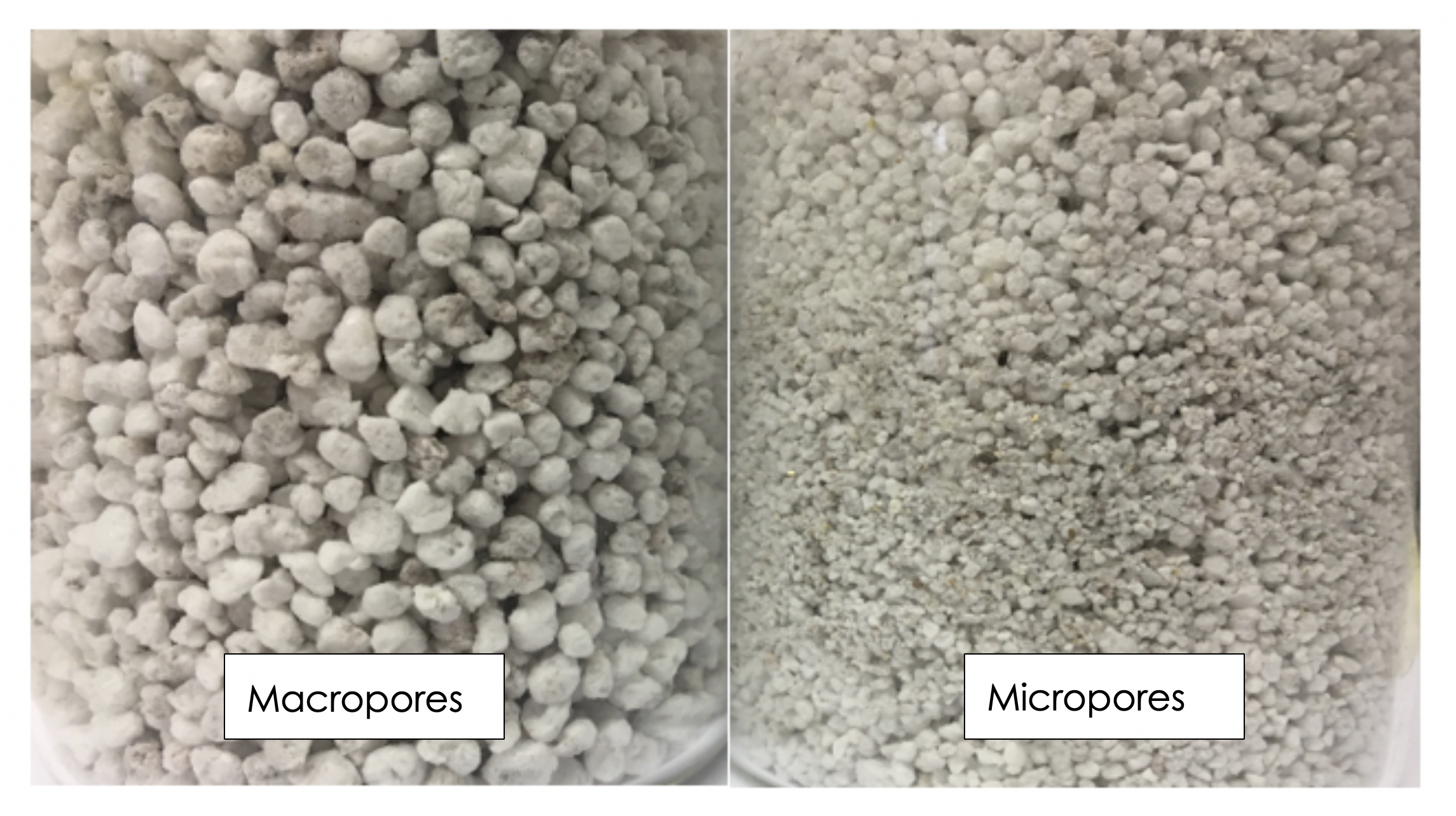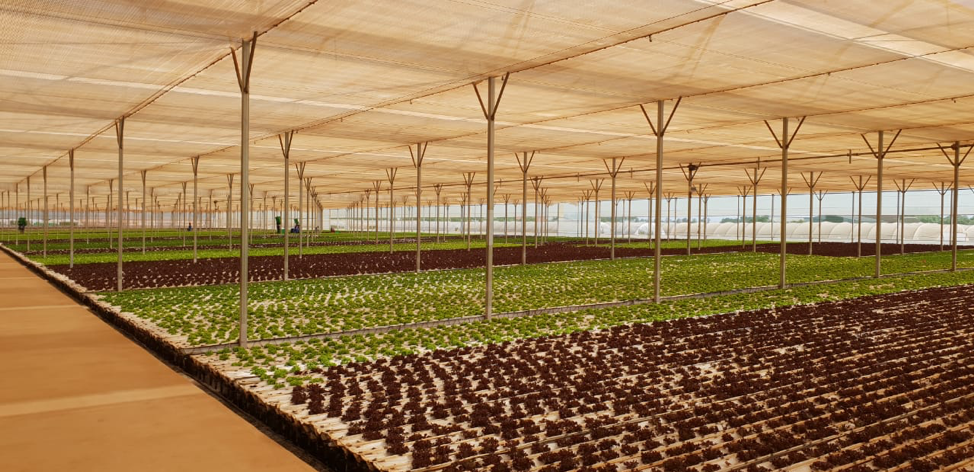The importance of perlite and its size distribution in growing media
DON’T JUST BLEND IN…
Understanding the purpose that each growing medium serves is the first step to selecting a unique blend for your needs.
Air, water and nutrients are the three basic requirements of plants and finding a balance between these three will ensure you promote strong root growth and healthy plants.
Photosynthesis is another key process in plant growth, however the reactions and interactions taking place below the surface of the growing medium is often neglected. The roots and microorganisms within a growing medium absorb oxygen and release carbon dioxide. As the carbon dioxide fills the growing medium, it must be replaced by oxygen so that the roots are protected from carbon dioxide poisoning and can partake in root respiration.
Oxygen traverses into a growing medium through the process of diffusion. The oxygen moves from an area of high concentration, which in this case would be the environment, to an area of low oxygen concentration. Many growing mediums become waterlogged during irrigation which either entraps the carbon dioxide within the medium or the water surrounds the entire root system thereby suppressing the presence of oxygen available to the roots.
The importance of providing water to a plant is affected by the water supplied and the water drained. Finding and maintaining a balance between these two factors will be key to creating the most favourable environment for your plants. The ability to hold water in your medium is largely dependent on the material type and the particle size distribution of your medium.
A BLEND IS BEST…
Bark, Peat and Coir are the most common growing media as they are able to retain high levels of water. Bark mediums can have up to 40 % pore space which absorbs and stores water whilst coir has a fine pore structure which is ideal for high water holding capacity. Peat and peat mosses are comprised of partially decomposed plants which are able to retain their cellular structure which ensures a high water-holding capacity.
The ability of a medium to hold water stems from the pore size. A smaller pore, known as a micropore, has the ability to store water due to capillary forces which in this case are stronger than the gravitational pull on the water. The presence of these micropores and their quantity influences the measure of the water holding capacity of a growing medium. In addition to micropores, the formation of macropores within a growing medium is equally important.
Macropores provide pathways for oxygen to move through the medium to aerate the root system and to improve drainage. The majority of growing medium blends containing bark, peat and/or coir have high water holding capacities, however drainage and structure within the medium may become problematic over time which will adversely impact the plant’s root system.

Good structure in a growing medium requires a balance between macro and micropores to provide required levels of aeration whilst, at the same time, maintaining an acceptable water holding capacity. As growing media age, the macropores tend to collapse as the organic materials decompose and the structure of the media shift. The air-filled porosity will decrease as there are fewer pathways for diffusion and the water holding capacity will increase as the drainage of the medium is clogged.
IMPROVING DRAINAGE AND AIR-FILLED POROSITY
Perlite is ideal in growing media blends as it provides a larger particle size and a structure that doesn’t decompose over time. Horticultural grade perlite is inert, contains a porous structure and is typically sized between 1-3 mm. Blending perlite with other growing media can significantly increase the air-filled porosity, whilst still maintaining the water-holding capacity.
The perlite particles are not uniform in shape and therefore “break” the uniformity of the material. These “breaks” allow for the formation of macropores which create the channels in a blend. The particle size of perlite is of utmost importance as a larger particle size creates the macropores however a particle finer than 1 mm can contribute to clogging the medium which is counterproductive in this instance.
As an inert material, perlite will not degrade over time in a growing medium. The effect of compaction due to irrigation is also greatly reduced because the perlite structure is porous and therefore has the ability to absorb and release excess water without altering the shape or size of the particle. Perlite has the ability to transform the behaviour of a growing media blend and provide the most suitable environment for both healthy root and plant growth.



